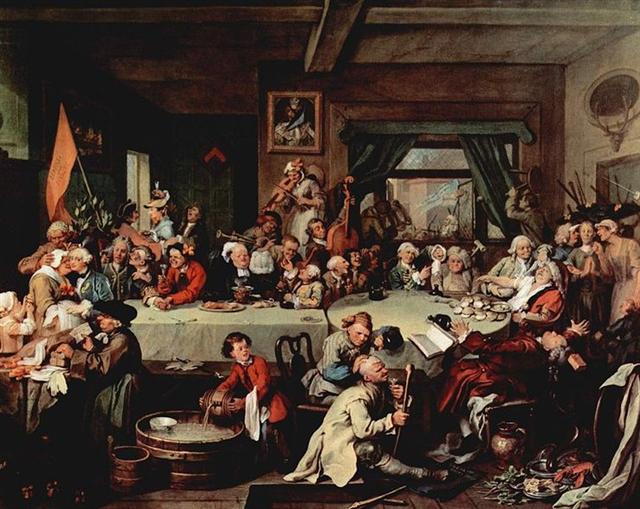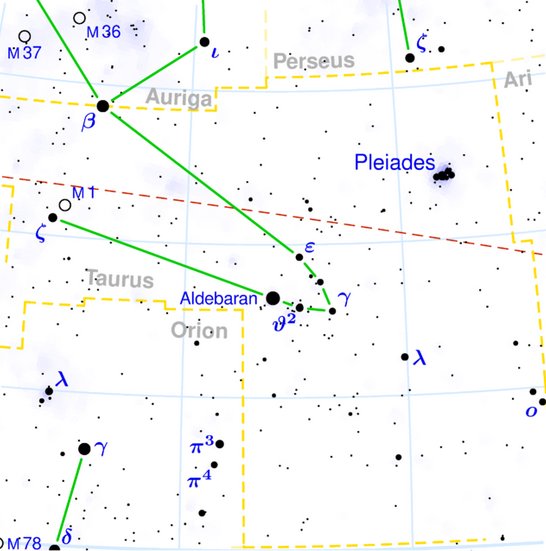|
Once again:
The distance between Hyadum II at the beginning of side a on the G tablet and Sirrah was *64 right ascension days, corresponding to how many days the precession had pushed the stars ahead in the Sun calendar. But Haedus II was a further *11 days ahead, and Elnath a fuither *5 days ahead than Haedus II. Hyadum II (*64) + *16 = *80 (Elnath). When Hyadum II returned to visibility after its close encounter with the blinding rays from the Sun it was known the Sun had reached Elnath, the star which was the point of the northern of the pair of horns of Taurus, the point which was in touch with the Auriga constellation.
..
Hb4-11 (158) and Hb4-39 (186) could therefore be read as *58 (MAY 18) respectively as *86, and 64 days later the corresponding stars would have advanced to *58 + *64 = *122 respectively to *86 + *64 = *150.
However, here the rule evidently had to be changed from subtracting *100 right ascension days (111 at Hb3-11 - 100 = *11 at APRIL 1) to subtracting twice 100 calendar days, in order for the dates to be in tune with the current era of rongorongo. 350 (DEC 15) - 200 = *150 (Aug 18). The view should be shifted half a year ahead because the precession had pushed the calendar dates of the Sun from the 1st half to the 2nd of the year. We can see that the stars which in the Golden Age of the Bull would have risen together with the Sun in day 138 (= 80 + 58) half a year later would have been in day 322 (= 138 + 184), and this would be 200 days later than day *122. On Hawaii November 18 was when (ideally) they would have been able to observe the Pleiades once again: ... The correspondence between the winter solstice and the kali'i rite of the Makahiki is arrived at as follows: ideally, the second ceremony of 'breaking the coconut', when the priests assemble at the temple to spot the rising of the Pleiades, coincides with the full moon (Hua tapu) of the twelfth lunar month (Welehu). In the latter eighteenth century, the Pleiades appear at sunset on 18 November. Ten days later (28 November), the Lono effigy sets off on its circuit, which lasts twenty-three days, thus bringing the god back for the climactic battle with the king on 21 December, the solstice (= Hawaiian 16 Makali'i). The correspondence is 'ideal' and only rarely achieved, since it depends on the coincidence of the full moon and the crepuscular rising of the Pleiades ... They waited for the return to visibility and this could in the Sun calendar be expressed as corresponding to *16 right ascension days. The difference compared to the view by those astronomers who had lived in the Golden Age of the Bull could therefore be expressed as 64 + 16 = 80 days, equal to the distance from December 31 to March 21 (0h). But a complication was the fact that the Pope Gregory XIII had subtracted 11 days due to the effects of the precession since Roman times. ... Gregory dropped 10 days to bring the calendar back into synchronisation with the seasons. Accordingly, when the new calendar was put in use, the error accumulated in the 13 centuries since the Council of Nicaea was corrected by a deletion of ten days. The Julian calendar day Thursday, 4 October 1582 was followed by the first day of the Gregorian calendar, Friday, 15 October 1582 (the cycle of weekdays was not affected) ... ... Britain and the British Empire (including the eastern part of what is now the United States) adopted the Gregorian calendar in 1752, by which time it was necessary to correct by 11 days ... It meant the Pope had 'stolen' these days:
Day 366 (January 1 in the Gregorian calendar) = 355 (December 21, the solstice) + 11. Should we count with 364 nights for a year, we could instead count 354 (= 12 * 29½) + 10 = 364 nights. But night number 350 (December 16) suggests 16 nights had to be added after the end of November and also that another 16 nights had to be added in order to reach January 1 (366). If the Pleiades ideally should be sighted in night numbeer 322, then there would be 4 weeks to night number 350. Here we will find (by studying the G text) that the Sun should be at the right shoulder of the Lucky King (Sadalmelik, α Aquarii) with the Full Moon ideally at the Heavenly Gate (ζ Tauri) - the point at the southern horn of Taurus, close to Messier 1 (M1):
|
||||||||||||||||||||||||||||||||||||||||||||||||||||||||||||||||||||||||||||||||||||||||||||||||||||||||||||||||||||||||||||||||||













